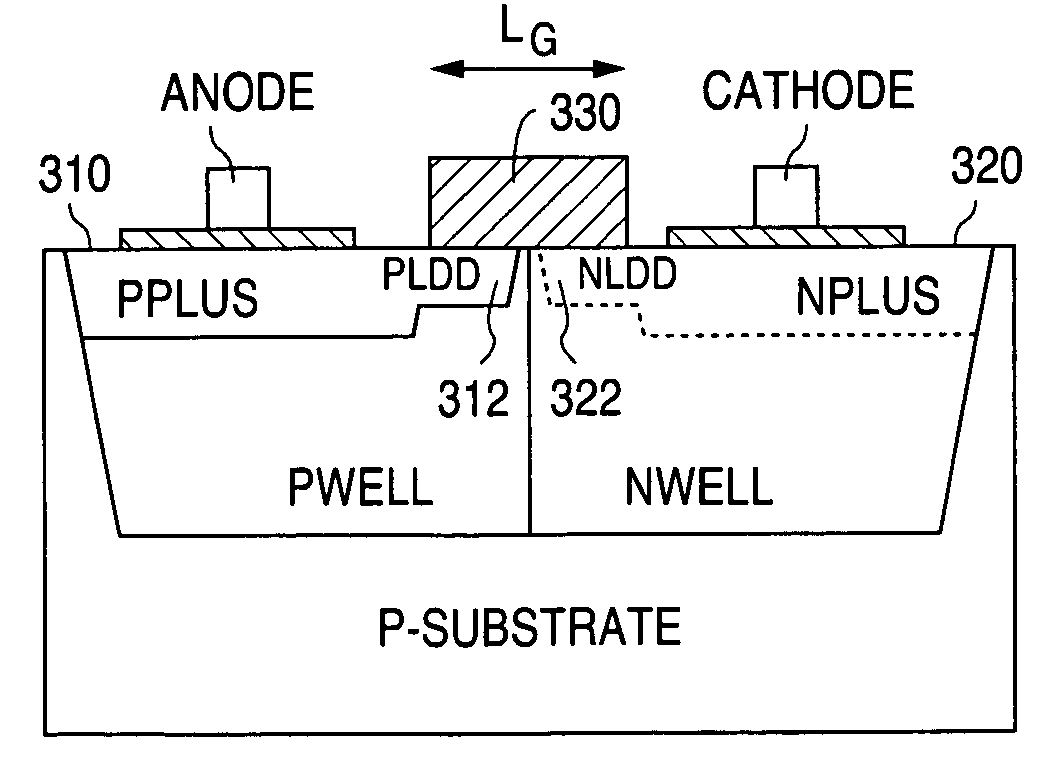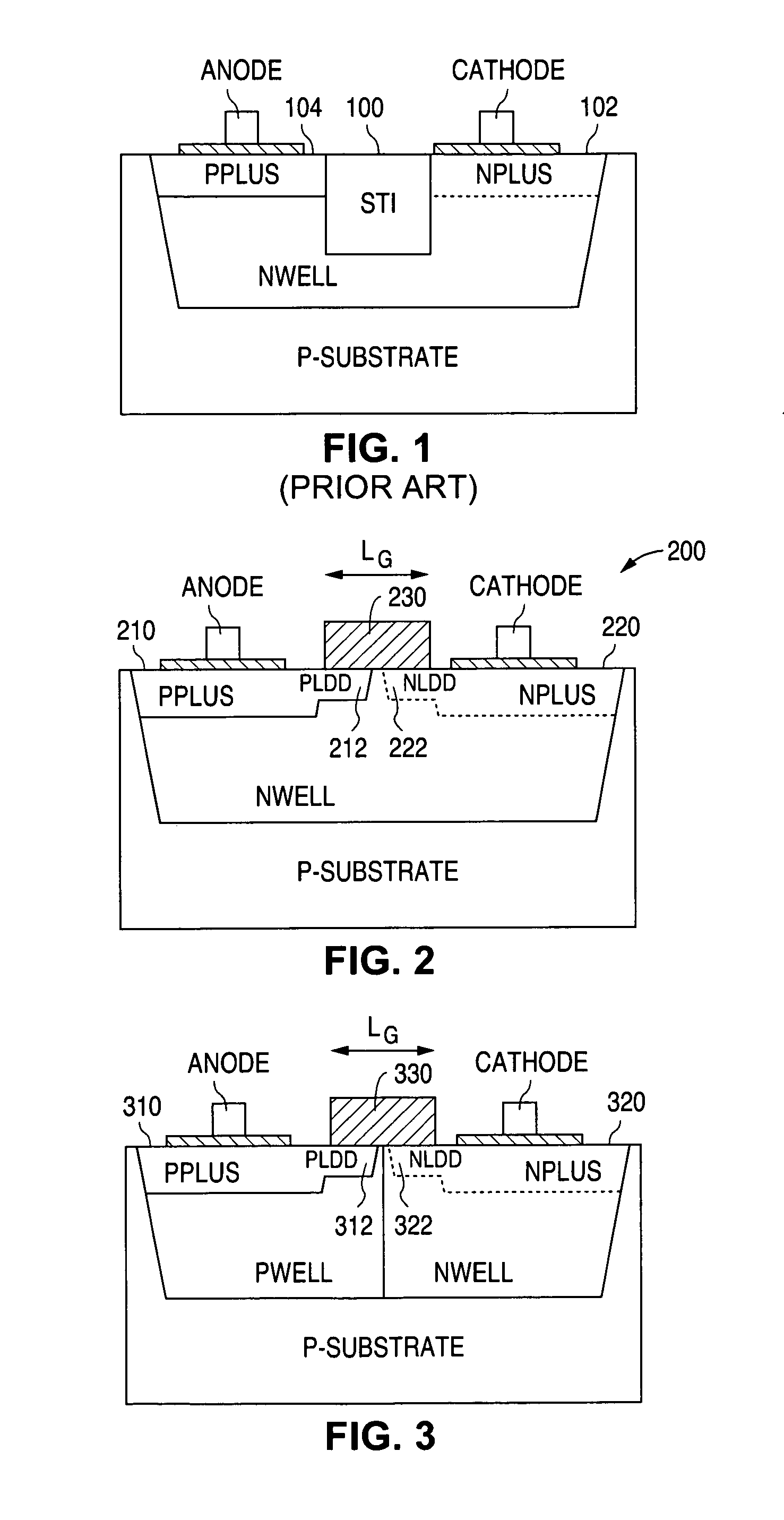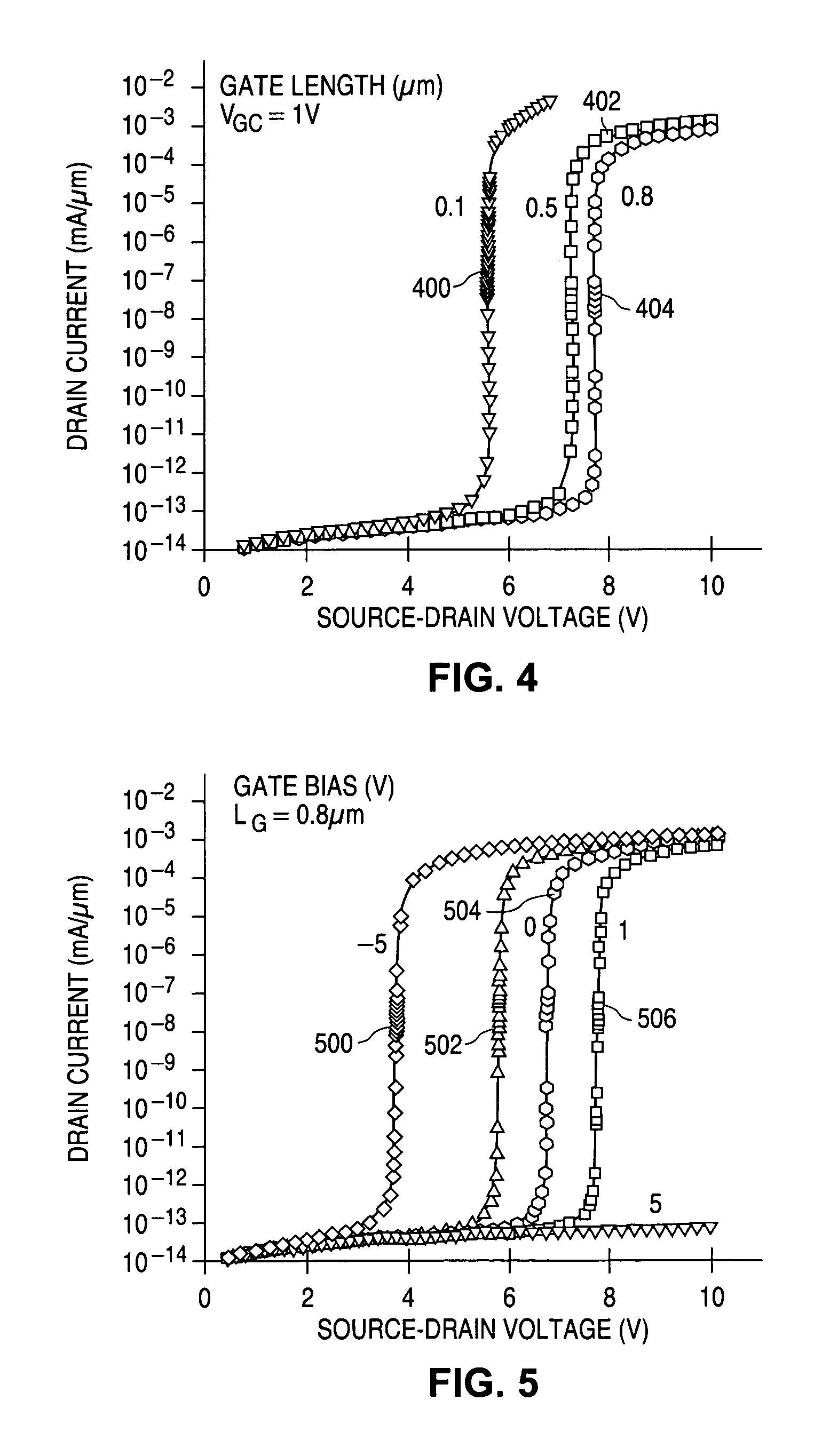Avalanche diode with breakdown voltage controlled by gate length
a technology of diodes and breakdown voltage, applied in the direction of basic electric elements, electrical apparatus, semiconductor devices, etc., can solve the problem that the polygate structure of the present diode cannot be provided
- Summary
- Abstract
- Description
- Claims
- Application Information
AI Technical Summary
Benefits of technology
Problems solved by technology
Method used
Image
Examples
Embodiment Construction
[0016]One embodiment of the invention is shown in FIG. 2 which shows the p-n junction of the diode 200 formed between a p+ region 210 formed in a lightly doped region 212 referred to as a p-lightly doped drain (PLDD), and a n+ region 220 formed in a lightly doped region 222 referred to as a n-lightly doped drain (NLDD).
[0017]The need for the PLDD and NLDD regions 212, 222 can be ascribed to the CMOS process. In order to avoid contamination across the junction during the high doping process, the formation of the p+ and n+ regions 210, 220 is typically preceded by the formation of lightly doped regions, referred to as PLDD (p-lightly doped region) and NLDD (n-lightly doped region), respectively.
[0018]As is evident from FIG. 2, a polygate 230 is formed over the region where the p-n junction will be located. The polygate 230 has a self aligning mask function. Even though separate masks are used during the doping of the p+ and PLDD and n+ and NLDD regions, it becomes difficult to properl...
PUM
 Login to View More
Login to View More Abstract
Description
Claims
Application Information
 Login to View More
Login to View More - R&D
- Intellectual Property
- Life Sciences
- Materials
- Tech Scout
- Unparalleled Data Quality
- Higher Quality Content
- 60% Fewer Hallucinations
Browse by: Latest US Patents, China's latest patents, Technical Efficacy Thesaurus, Application Domain, Technology Topic, Popular Technical Reports.
© 2025 PatSnap. All rights reserved.Legal|Privacy policy|Modern Slavery Act Transparency Statement|Sitemap|About US| Contact US: help@patsnap.com



